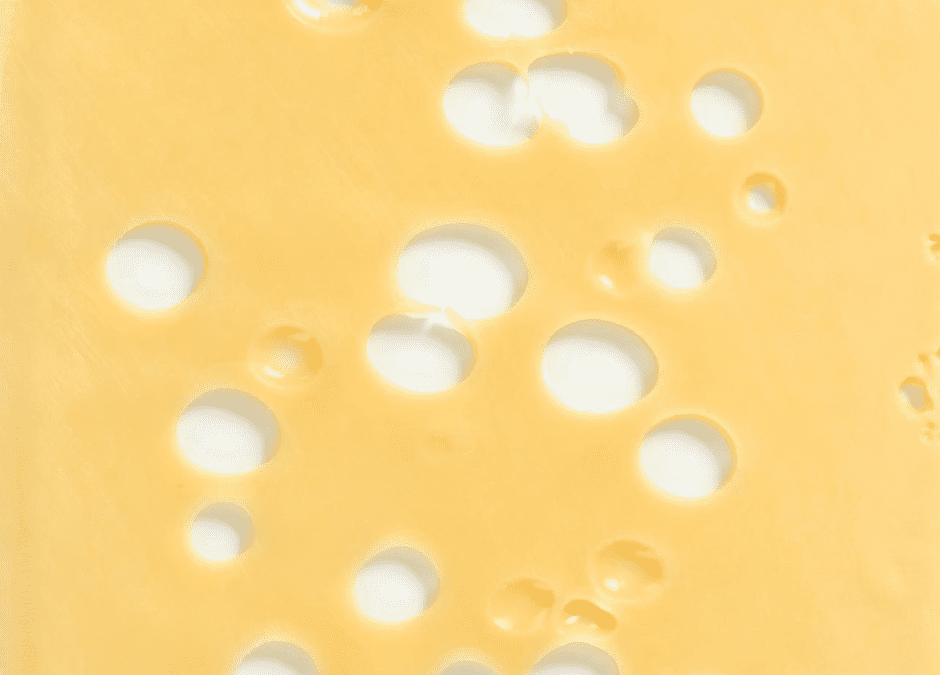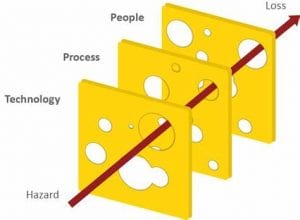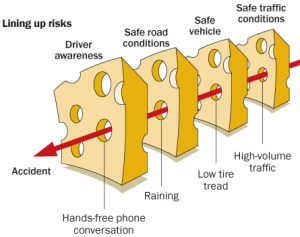Some of you have already heard of the “Swiss Cheese Theory.” This theory was developed by James Reason in 1990 and published in his book “Human Error”. If you are interested, I found this YouTube Video where James Reason explains this theory himself. His theory is often used in risk management. Reason tells us that each slice of cheese represents a barrier, or a way to prevent a negative occurrence. No single barrier is completely effective. Each one has weaknesses represented by the holes in the cheese. The holes are different sizes and in different shapes. Failure or accidents can occur when the holes align.
For those of us in Ohio, you may have heard Dr. Amy Acton use that reference to describe the many steps we can take against the spread of Covid-19. She told us that we need to do several things, such as washing hands, don’t touch your face, keep a 6-feet social distance, avoid large groups, and wear a mask. Many people seem to argue the part about wearing a mask because it’s not 100% effective. That’s right it’s not, but that’s not the point. The point goes back to the Swiss Cheese Theory. Each one of the methods mentioned is not completely effective, but if we put them all together and practice each one of them, we are reducing the risk of spreading the virus.
A good analogy may be driving a car. We know that there is inherent risk in driving a car. Referring back to last month’s blog where we discussed that risk is a function of hazard and exposure, driving is high exposure and high hazard. Therefore, it’s an area of high risk. What do we do to minimize those risks? Some ideas that come to mind are seat belts, speed limits, antilock brakes, airbags, and limits on blood alcohol content. The newer cars have even more features that are designed to improve safety such as lane monitoring, backup cameras, automatic emergency braking, and adaptive cruise control. This is not an exhaustive list, and you may be able to think of some additional methods. Not one of these is comprehensively effective, but if we put them all together and practice or use each one of them, we are increasing our odds of a safe driving experience.
What about at your plant site? Have you already evaluated your areas of risk as functions of both hazard and exposure? Do you need help determining ways to reduce risk? You will want to document your preventive and protective controls that will act as slices of swiss cheese. Some ideas:
- Determine if it’s possible to eliminate the hazardous substance
- Evaluate alternative chemicals that could be substituted for the hazardous one
- Search for a modification to the process that may reduce exposure
- Establish ways to contain any releases
- Perhaps adding general exhaust ventilation can help
- Set up Standard Operating Procedures (SOP)
- Provide the correct Personal Protective Equipment (PPE)
At Strategic Realm Consulting, we can help with risk assessments and help you to determine ways to reduce your risk. Contact us, and let’s discuss ways we can help you understand your areas of risk and devise a plan.



